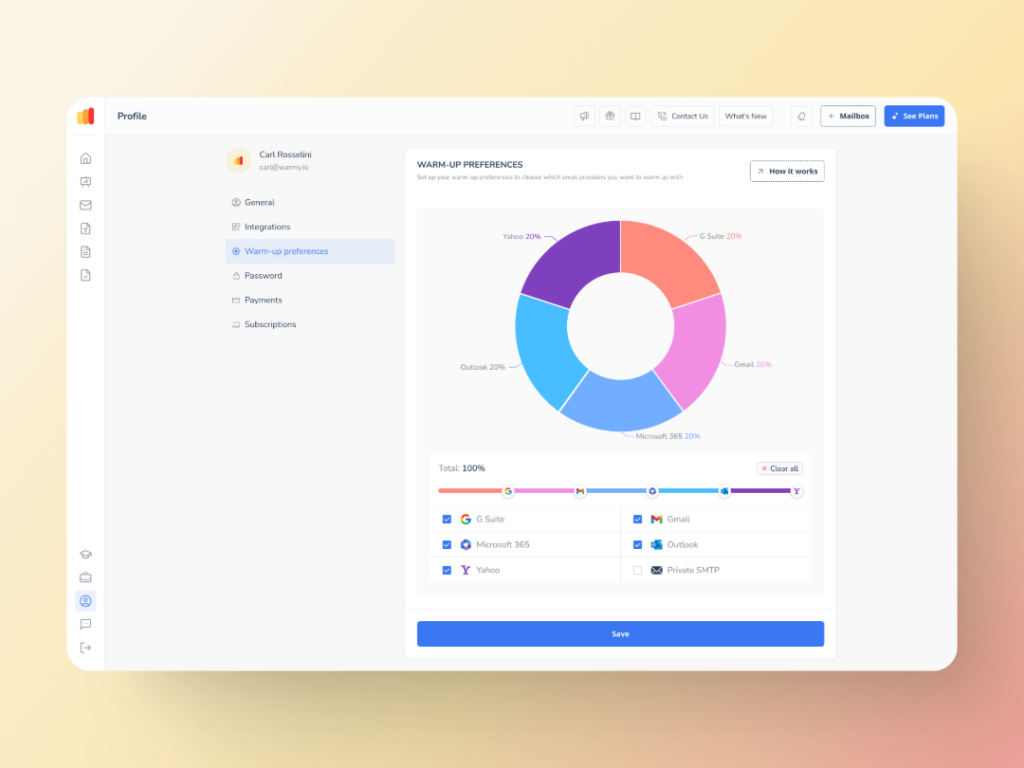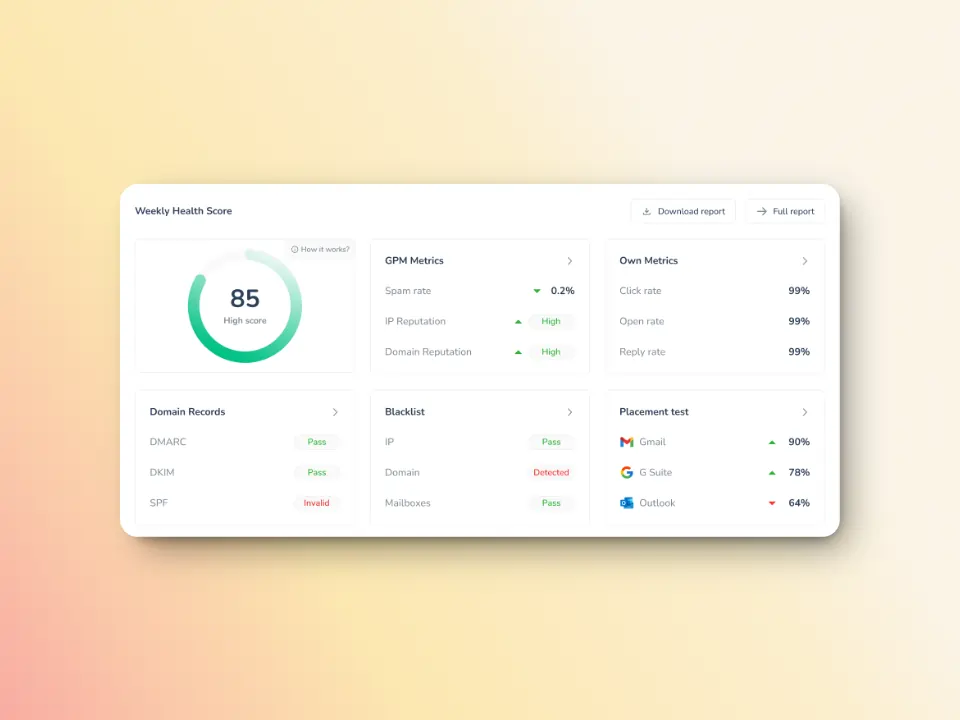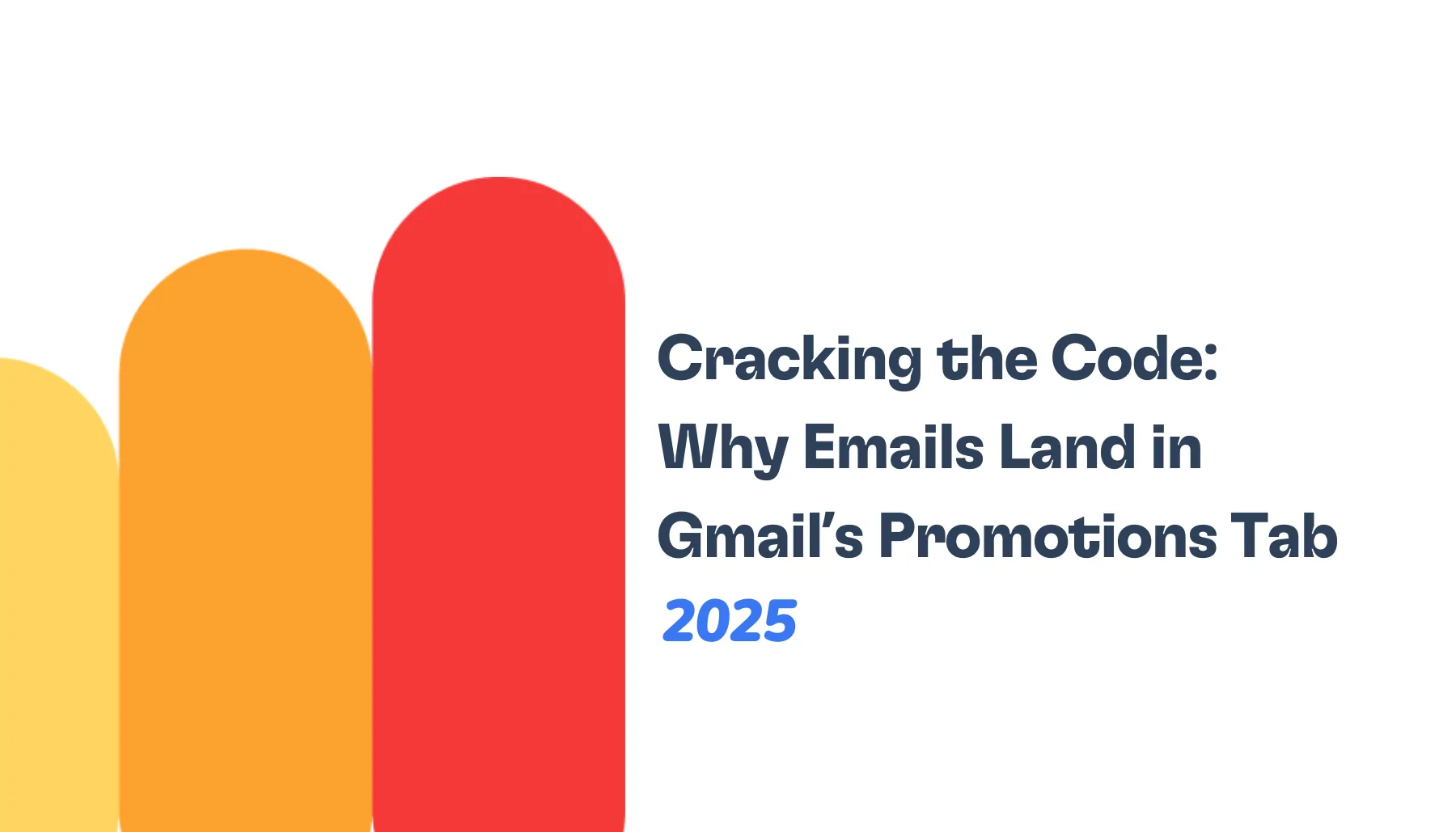Every marketer wants to know their email campaign is well-received, lands straight in the inbox, and gets the recipients to take action. But even with all your best efforts, many of those emails still fall into the black hole of the email world—the dreaded spam folder. And they are never read by your audience.
One common cause? Certain words and phrases that trigger spam filters.
Spam filters are constantly crawling all over the words in your emails, searching for language that is usually a sign of a bad or deceptive message. Using too many “spam trigger words” can decrease your email’s likelihood of hitting the inbox, thus, reducing your open rates and overall campaign performance.
The good news? You no longer have to wonder which words are endangering your emails or scour your content by hand. If you have the right tools, such as a template checker, you’re able to automatically detect risky language, receive safer alternative suggestions, and fine-tune your emails to fly under the radar of spam filters without losing the message’s power.
Understanding spam filters and trigger words
Spam filters serve as the bouncers of your recipients’ inboxes. Their job is to keep out unwanted or dangerous emails, but they sometimes end up blocking even the good-old marketing emails that recipients signed up for.
Q: What are spam filters?
A: Spam filters are mechanisms used by email providers to identify and filter out undesirable or potentially harmful emails before they reach a user’s inbox.
🔖 Related Reading: Spam filters: everything you need to know
Current spam filters employ multiple complex algorithms that take many factors into account such as your sender reputation, email structure ,and content. In terms of content, filters check for language patterns that could indicate the email is suspicious or overly marketing-heavy. They look for typical spam trigger words—spam words and phrases that are frequently found in spam or phishing emails.
The role of spam trigger words in filtering decisions
Certain words have been flagged repeatedly by spam filters because spammers often use them to lure or pressure recipients. Email service providers have learned to be more cautious to protect their users—and for good reason too. In 2023, approximately 45.6% of all emails worldwide were identified as spam.
Plus, with $44.2 million total lost through phishing attacks in 2021, email service providers can never be too complacent. They have also recognized some patterns and similarities among the suspicious emails that were not intercepted, to ensure that these emails will not cause damage again.
Using these words increases the chance your email will be flagged as spam. However, it’s important to note that context matters—a word alone might not cause a problem, but repeated or aggressive use can raise red flags.
Why context and frequency matter
Spam filters don’t only scan for individual words. They also scan how often these words appear as well as the context in which they appear. For instance, one isolated use of the word “free” may not be damaging, but a subject and body packed with spam trigger words increase the risk. Repetition of the usage implies the email is attempting to deceive the recipients.
List of spam trigger words to avoid using
Certain words and phrases are notorious for triggering spam filters. While it’s impossible to list every risky term, being aware of common spam trigger words can help you write cleaner emails and improve deliverability. Below, we break down key spam words to avoid in subject lines and email bodies, along with categories to watch out for.
In subject lines
Subject lines are the first thing recipients see—and spam filters scan them closely. Words that promise unrealistic benefits or create excessive urgency often trigger filters.
Did you know that 47% of receivers open an email based solely on the subject line? And 69% of recipients report an email as spam also based on the subject line? What does this mean? Simple: Your subject line can help decide whether you land in the spam folder or the inbox.
Examples of high-risk spam words you should avoid using in subject lines:
- 100 Free!!!
- Act Now
- Limited Time Offer
- Urgent!
- Congratulations
- Winner
- Free Gift Inside
- Hurry, Don’t Miss Out!
Now, it’s normal for email senders to want to craft attention-grabbing subject lines—and that’s probably also the thought process of spammers. Hence, these high-risk spam words are words that are almost guaranteed to make a recipient open the email.
Using these words repeatedly or in all caps can raise spam scores and lower open rates. Try to craft subject lines that are clear, honest, and relevant instead—and yes, they can be attention-grabbing and not spammy at the same time.
🔖 Related Reading: 14 Tips For Writing An Excellent Email Subject Line + Examples
In email body content
Email spam filters also analyze the body of your email. Overusing sales-heavy or manipulative language in your email copy can harm deliverability.
List of spam words or phrases to avoid in email bodies include:
- Guaranteed
- Risk-Free
- Make Money Fast
- No Credit Check
- Cheap
- Click Here
- Get Started Now
- One Time Only
- No strings attached
- No hidden fees
- No obligation
- Get the Best Price!
Repeated use of these terms or aggressive calls to action can cause your email marketing campaigns to be flagged or filtered out.
Categories of spam trigger words
Understanding the different categories of spam trigger words can help you spot risky language more easily and write emails that avoid common pitfalls. Here’s a deeper look at some of the most frequent types of spam words and why they raise red flags:
Financial and promotional words
These words are often associated with aggressive sales tactics, scams, or misleading offers. Spammers frequently use them to lure recipients with promises of easy money or big savings, so spam filters watch them closely.
Examples include:
- Free: Promises something at no cost, which can be suspicious if overused.
- Earn and Cash: Suggest making money quickly, often linked to scams.
- Discount and Investment: Indicate commercial offers that can seem pushy or spammy if repeated.
- Credit: Common in loan or financial scam emails.
While these words can be used in legitimate marketing, using them sparingly and in genuine context reduces the risk of triggering spam filters and being marked as spam. if you really want to stay out of the spam folder, you need to put in extra effort to avoid this list of words.
Urgency and pressure tactics
Creating urgency is a common marketing strategy, but when done too aggressively, it can appear manipulative. Spam filters flag phrases that push recipients to act immediately, especially when combined with other spam signals.
Examples include:
- Act Now
- Urgent
- Limited Time
- Last Chance
- Don’t Delete
These phrases can increase open rates when used tastefully, but overuse or all-caps formatting can backfire by increasing spam scores.
Personal and privacy-related terms
Emails mentioning sensitive personal information or making strong guarantees can trigger spam filters because such language is often linked to phishing or fraudulent activity.
Examples include:
- Password and Social Security Number: Frequently used in scams attempting to steal personal information.
- Confidential: May suggest sensitive content that triggers extra scrutiny.
- Guarantee: Often used in exaggerated or misleading claims.
How Warmy.io’s template checker empowers marketers

While there are many spam checkers available, few are truly designed with marketers’ needs in mind. Warmy.io’s Template Checker is built to be straightforward, reliable, and practical—perfect for teams focused on results without requiring deep technical knowledge. Here’s what sets it apart:
Easy-to-use interface and automation
No coding skills needed to use this spam checker tool. Just paste your email content into Warmy.io, and within seconds, the tool scans it for a wide range of potential issues or spam triggers. Its clean, intuitive interface makes the process simple and quick. Whether you’re an individual marketer or part of a larger agency, it integrates smoothly into your workflow. With it, you can tweak your copy accordingly before you send emails.
Clear, actionable results with suggestions
Warmy.io doesn’t only identify problems—it guides you on how to solve them. You get a detailed report highlighting specific errors, why they matter, and the exact criteria used to evaluate your template. This empowers you to make precise improvements confidently.
New Chrome Extension for real-time checks
Warmy.io now offers a Chrome Extension that reviews your emails as you write. It detects errors, formatting problems, and elements that could trigger spam filters right in your email client—helping you send polished, deliverability-friendly emails every time.
Bonus: Practical tips to avoid spam trigger words without losing creativity
We get it—having these spam trigger words may feel like your creativity is being limited. But there are many ways to come up with open-worthy subject lines and click-worthy emails without alerting the spam triggers. With the right approach, you can write engaging, authentic copy that connects with your audience while staying clear of spam filters. We’ve compiled a few quick tips:
- Write authentic, clear, and engaging Copy. Focus on honest, straightforward language that reflects your brand’s voice. Avoid exaggerated claims or pressure tactics that sound too good to be true. Clear and genuine messaging builds trust with your readers and reduces the risk of being flagged as spam.
- Use personalization and segmentation wisely. Tailor your emails to specific audience segments based on their preferences, behavior, or past interactions. Personalized content feels relevant and less like generic marketing, which helps avoid spam filters and increases engagement.
- Test and refine subject lines and body content. Continuously test different subject lines and message variations to find what resonates without triggering spam filters. Use A/B testing to measure open rates and deliverability, then refine your copy based on real data. Combining this with tools like Warmy.io’s template checker ensures your content is both compelling and compliant.
- Avoid excessive use of capital letters and punctuation. Using ALL CAPS or too many exclamation points!!! can raise spam scores. Write naturally and use punctuation sparingly to keep your emails professional and easy to read.
- Limit the use of images and links. Too many images or links can look suspicious to spam filters. Balance your design with well-placed text and only include necessary links. Make sure all links are valid and point to reputable sites.
Warmy’s Template Checker is just one part of a full suite of deliverability tools
Warmy’s Template Checker is only one part of a comprehensive suite of features designed to boost your email deliverability. If you’re ready to improve your email deliverability as a whole, here’s what else Warmy offers:
AI-powered warmup gradually ramps up your email sending volume, building your domain’s reputation naturally. With the capacity to send up to 5,000 warm-up emails daily and support for over 30 languages, it’s a powerful tool for any sender. The Warmup Preferences feature lets you customize how emails are distributed across different providers and target either B2B or B2C engagement patterns.

Additionally, Warmy’s advanced seed lists consist of real email addresses that mimic genuine human behavior. These addresses open, read, scroll, and click your emails, helping to keep your messages out of spam folders. If any emails do land in spam, they’re manually flagged and removed to protect your sender reputation.

The Domain Health Hub, on the other hand, provides quick and easy access to a detailed breakdown of health metrics, performance reports, and deliverability trends per domain. You also get a domain health score based on factors like authentication, blacklist status, and inbox placement tests.

Make your emails words work for you, not against you
Email marketing is too valuable to leave to chance. Each message you send represents your brand, and even a small technical or content error can derail your campaign. Improve email deliverability by
Ready to take your deliverability to the next level? Sign up for a free trial of Warmy.io today.











